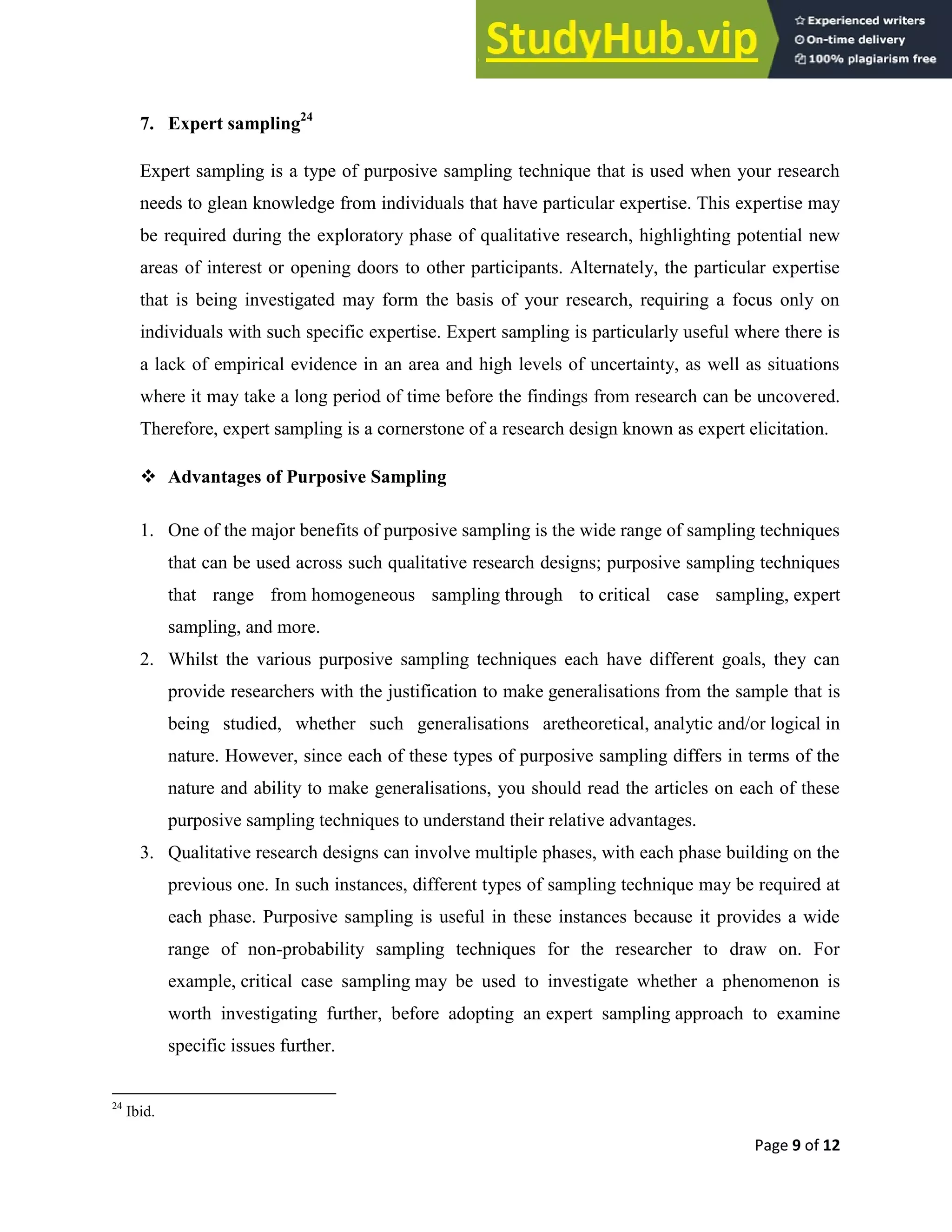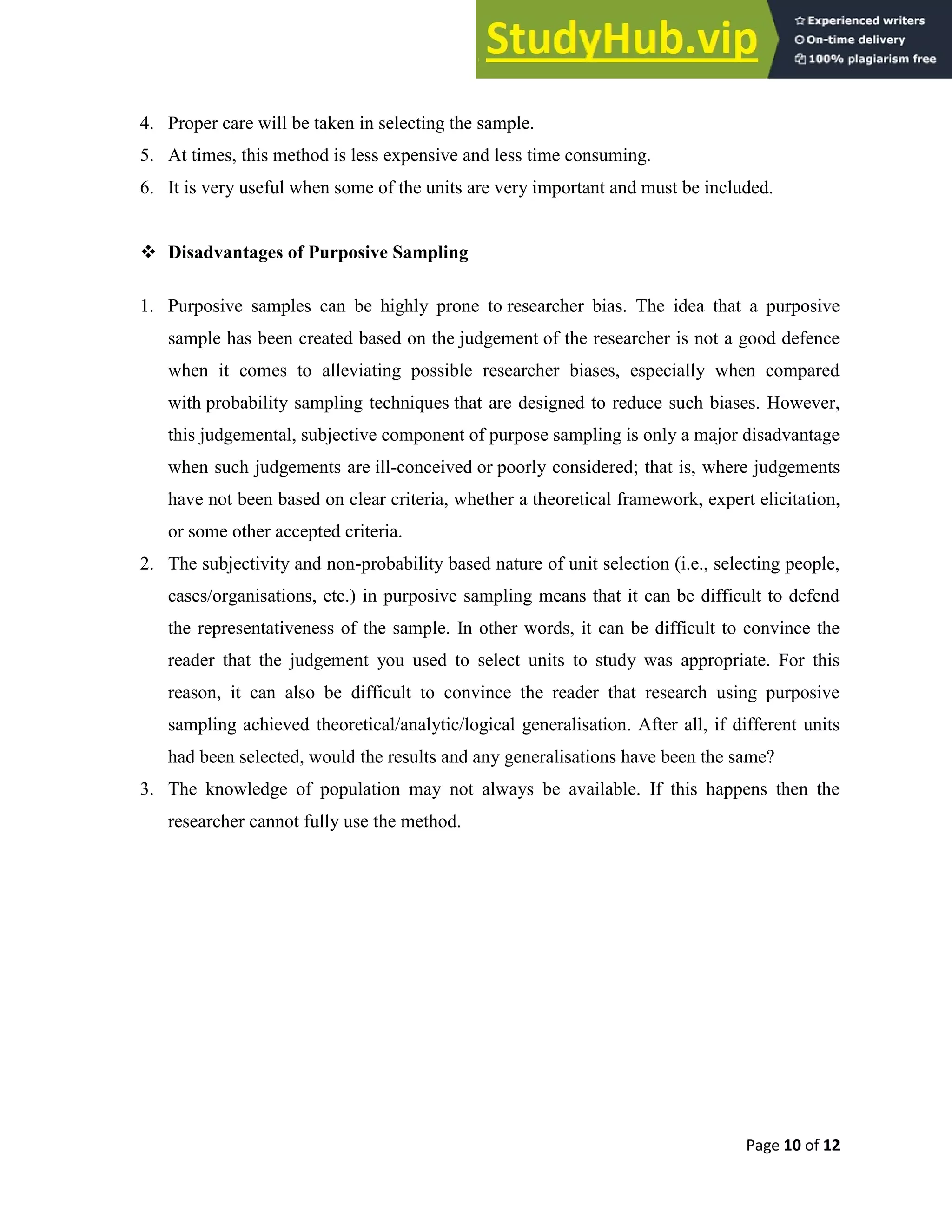This document provides an overview of purposive sampling as a non-probability sampling method in research. It defines purposive sampling as relying on the researcher's judgment to select units for study based on criteria relevant to the research questions. The document outlines the general process of sampling, including identifying the population, specifying a sampling frame and method, determining sample size, and implementing the plan. It notes that purposive sampling focuses on particular characteristics of interest rather than aiming for statistical generalization. The goal is to enable answering the research questions by focusing on relevant characteristics, rather than achieving a representative sample.
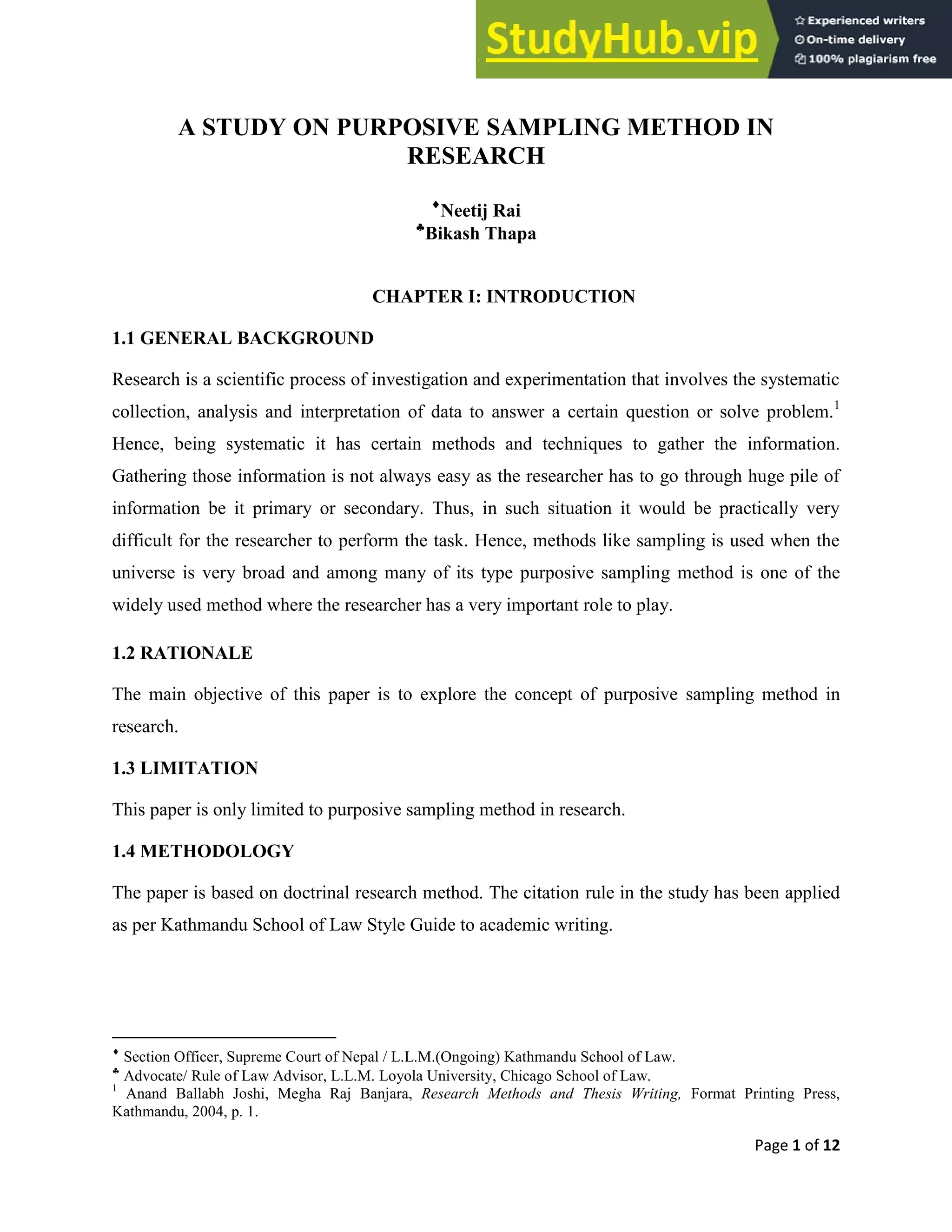
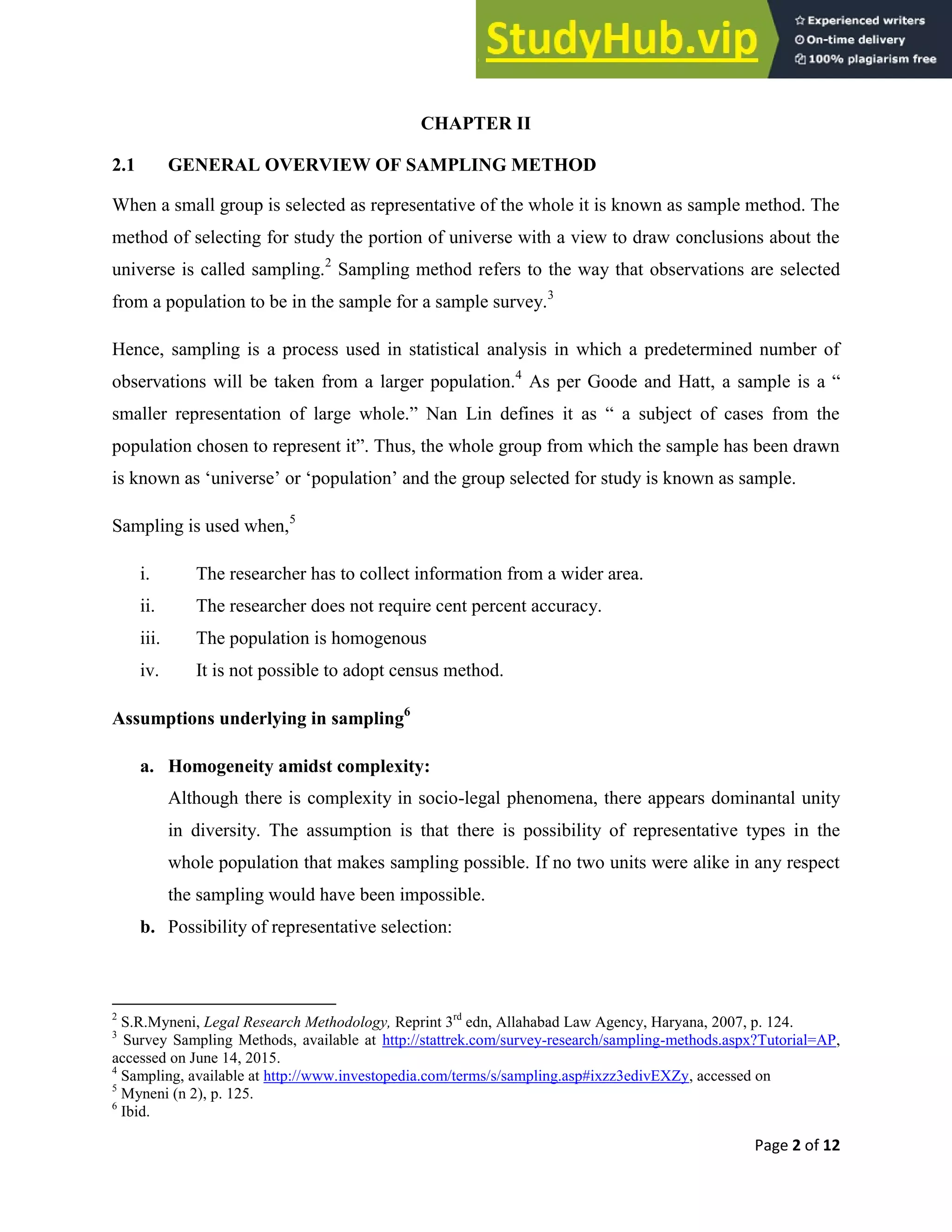
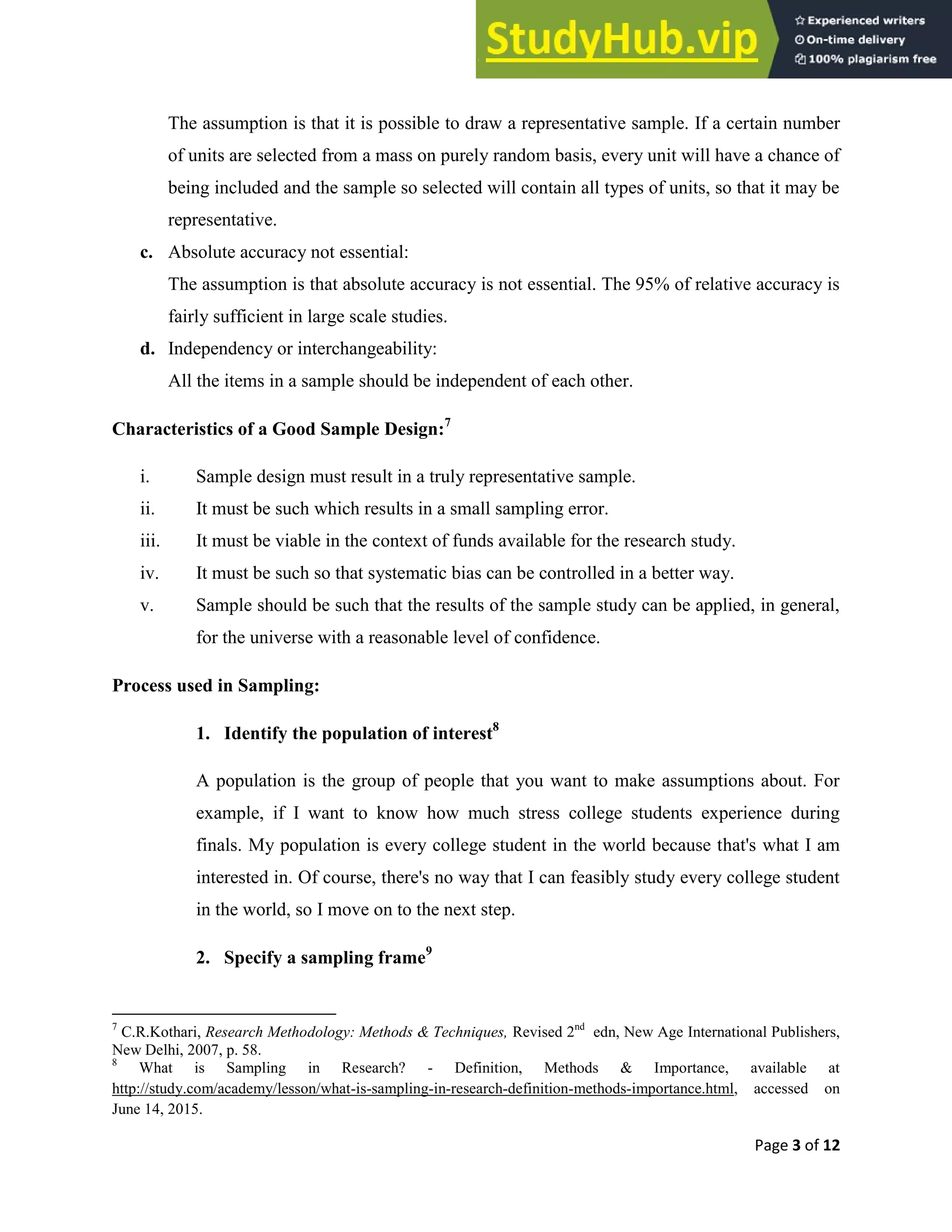

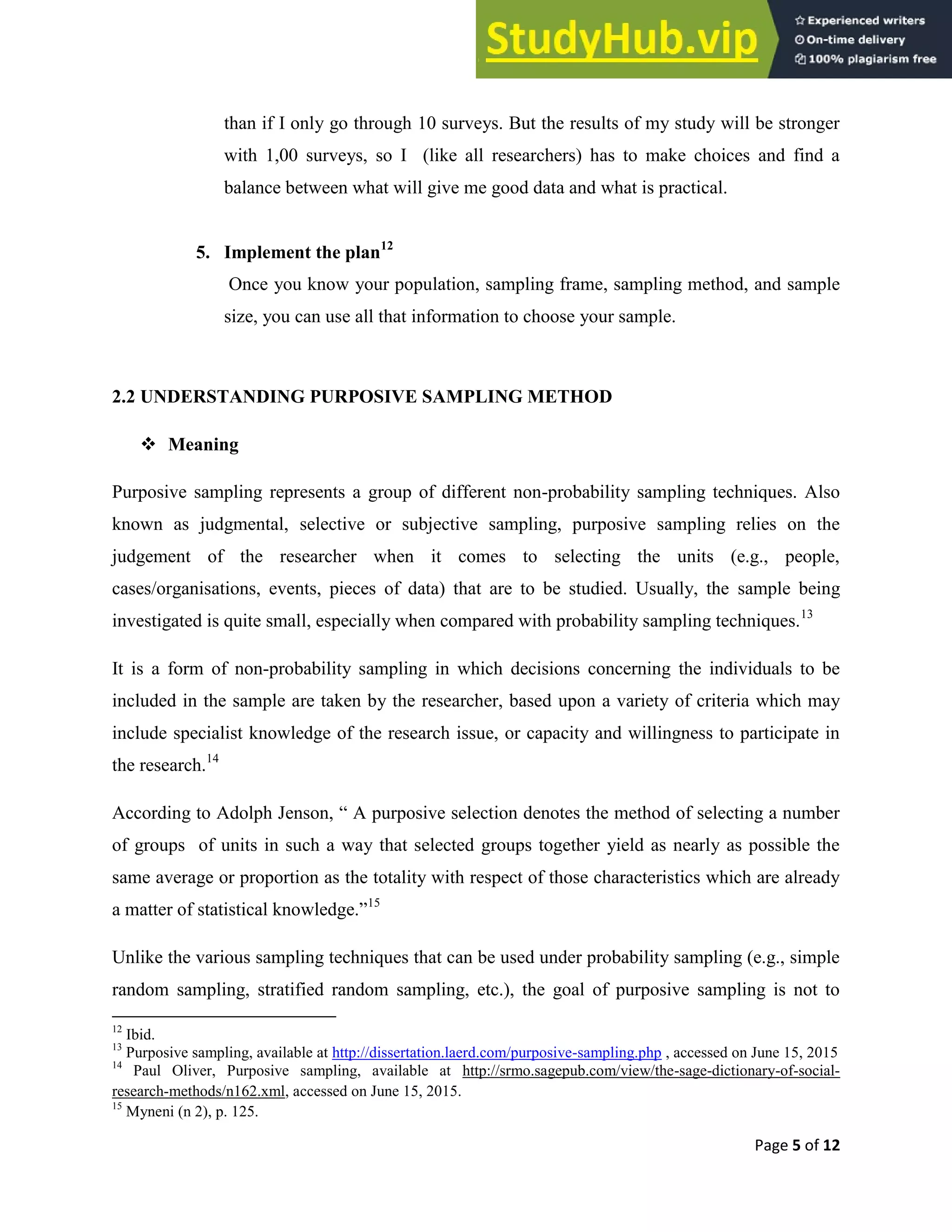
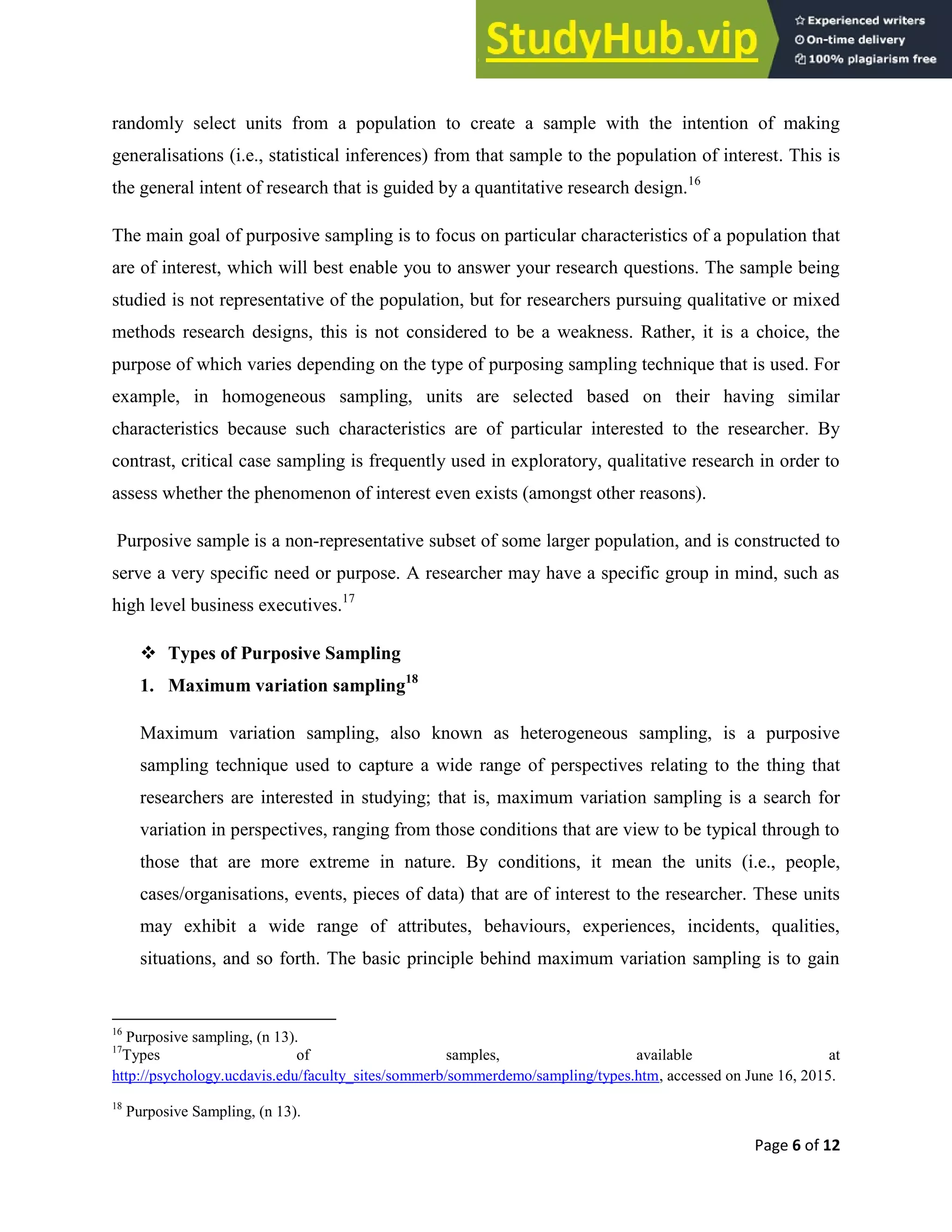
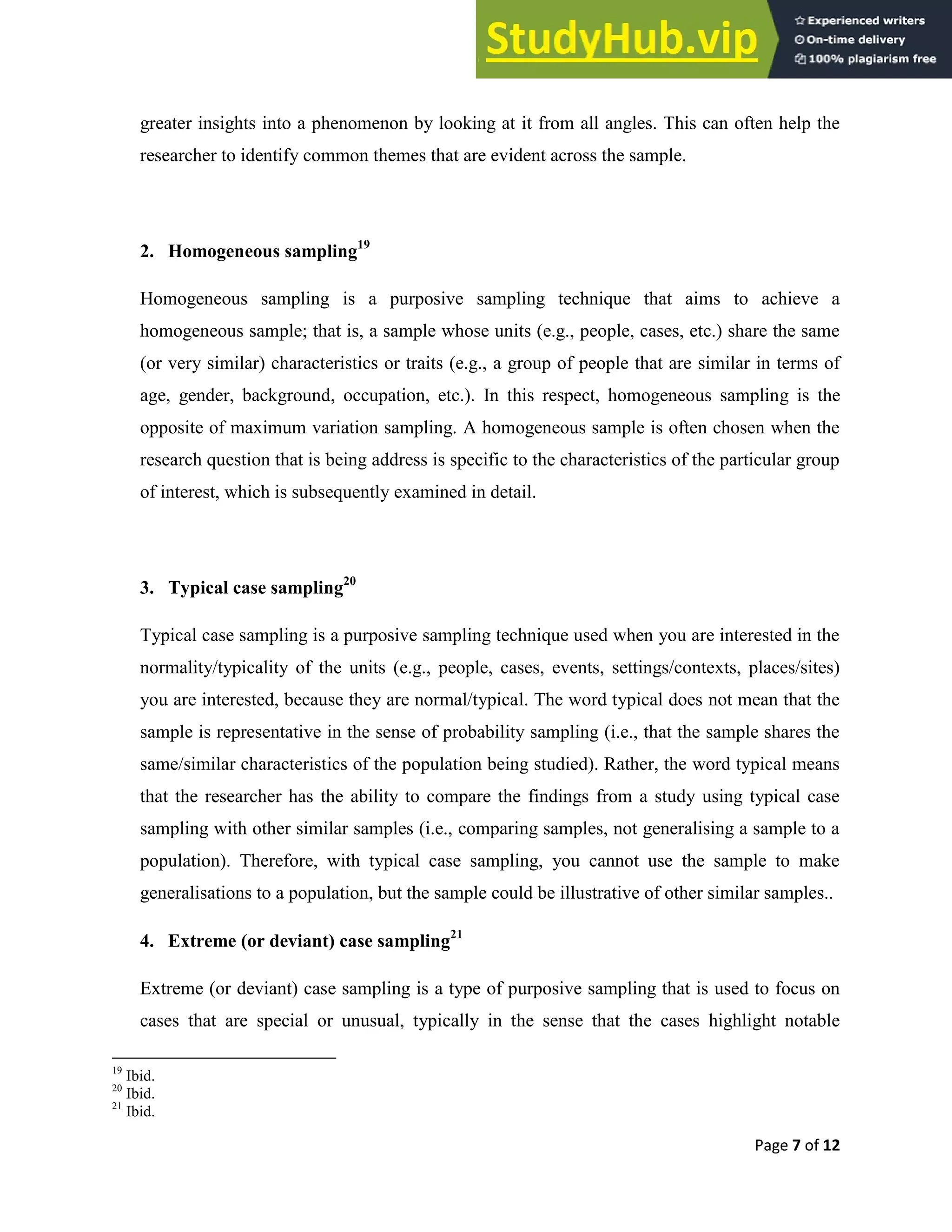
![Page 8 of 12
outcomes, failures or successes. These extreme (or deviant) cases are useful because they
often provide significant insight into a particular phenomenon, which can act as lessons (or
cases of best practice) that guide future research and practice. In some cases, extreme (or
deviant) case sampling is thought to reflect the purest form of insight into the phenomenon
being studied.
5. Critical case sampling22
Critical case sampling is a type of purposive sampling technique that is particularly useful in
exploratory qualitative research, research with limited resources, as well as research where a
single case (or small number of cases) can be decisive in explaining the phenomenon of
interest. It is this decisive aspect of critical case sampling that is arguably the most important.
To know if a case is decisive, think about the following statements: ?If it happens there, it
will happen anywhere?; or ?if it doesn?t happen there, it won?t happen anywhere?; and ?If
that group is having problems, then we can be sure all the groups are having problems?.
Whilst such critical cases should not be used to make statistical generalisations, it can be
argued that they can help in making logical generalisations. However, such logical
generalisations should be made carefully.
6. Total population sampling23
Total population sampling is a type of purposive sampling technique where you choose to
examine the entire population (i.e., the total population) that have a particular set of
characteristics (e.g., specific experience, knowledge, skills, exposure to an event, etc.). In
such cases, the entire population is often chosen because the size of the population that has
the particular set of characteristics that you are interest in is very small. Therefore, if a small
number of units (i.e., people, cases/organisations, etc.) were not included in the sample that is
investigated, it may be felt that a significant piece of the puzzle was missing [see the article,
Total population sampling, to learn more].
22
Ibid.
23
Ibid.](https://image.slidesharecdn.com/astudyonpurposivesamplingmethodinresearch-230805190156-2eaac486/75/A-STUDY-ON-PURPOSIVE-SAMPLING-METHOD-IN-RESEARCH-8-2048.jpg)
